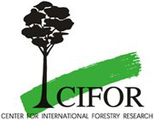The January 2012 issue of CIFOR's newsletter includes an overview of REDD+ discussions at UNFCCC COP 17, underlining that REDD+ negotiations centered around finance, safeguards, reference levels and measurement, reporting and verification (MRV).
CIFOR scientists note that, while the decision on finance leaves the door open for markets, funds or a combination of both, the rules are not certain enough to generate market confidence.
 31 January 2012: The latest newsletter of the Center for International Forestry Research (CIFOR) provides an assessment of the outcomes of the 17th session of the Conference of the Parties (COP 17) to the UN Framework Convention on Climate Change (UNFCCC), concluding that it delivered mixed results for forests.
31 January 2012: The latest newsletter of the Center for International Forestry Research (CIFOR) provides an assessment of the outcomes of the 17th session of the Conference of the Parties (COP 17) to the UN Framework Convention on Climate Change (UNFCCC), concluding that it delivered mixed results for forests.
The January 2012 issue of the CIFOR newsletter cites progress on carbon accounting for REDD+ (reducing emissions from deforestation and forest degradation, and the role of conservation, sustainable management of forests and enhancement of forest carbon stocks in developing countries), but highlights a weak decision on social and environmental safeguards at COP 17.
The CIFOR blog posting underlines that REDD+ negotiations centered around finance, safeguards, reference levels and measurement, reporting and verification (MRV). CIFOR scientists note that, while the decision on finance leaves the door open for markets, funds or a combination of both, the rules are not certain enough to generate market confidence. In contrast, CIFOR underscores that the meeting provided a decision on robust reference levels. The newsletter also provides an overview of Forest Day 5 and calls on readers to fill out a survey on priorities for Forest Day 6 at COP 18.
In addition, the publication features an article on a CIFOR workshop on conservation of great apes, with a call for ape conservation to be integral to REDD+. CIFOR is a member of the Consultative Group on International Agricultural Research (CGIAR). [Publication: CIFOR Newsletter January 2012]